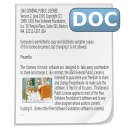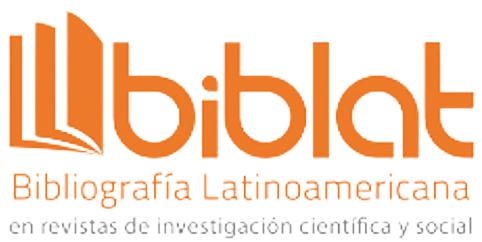Use of neural networks to determine the rating of an application published in the Google Play Store
Abstract
Artificial intelligence is the combination of algorithms written in the form of computer code in order to be executed on a computer to emulate behaviors similar to human intelligence. In this work, the use of neural networks will be sought, which are part of artificial intelligence and allow us to solve prediction problems. A dataset based on Google Play Store app downloads and their features will be modified and the information processed to obtain output information.
Downloads
References
NewsEuropeanParliament, “What is artificial intelligence and how is it used? | News | European Parliament,” News European Parliament, 2021.://www.europarl.europa.eu/news/en/headlines/society/20200827STO85804/what-is-artificial-intelligence-and-how-is-it-used (accessed Jun. 29, 2022).
R. P. Diez, Introducción a la inteligencia artificial: Sistemas expertos, redes neuronales artificiales y computación evolutiva. Oviedo: Universidad de Oviedo, Servicio de Publicaciones, 2001.
S. E. T. Sánchez, M. O. Rodríguez, A. E. Jiménez, and H. J. P. Soberanes, “Implementación de Algoritmos de Inteligencia Artificial para el Entrenamiento de Redes Neuronales de Segunda Generación,” Jóvenes En La Cienc., vol. 2, no. 1, pp. 6–10, 2016, Accessed: Jun. 29, 2022. [Online]. Available: ://www.jovenesenlaciencia.ugto.mx/index.php/jovenesenlaciencia/article/view/715.
M. Gallego Gallego and J. Hernández Cáceres, “Identificación de factores que permitan potencializar el éxito de proyectos de desarrollo de software,” Sci. Tech., vol. 20, no. 1, p. 70, Mar. 2015, doi: 10.22517/23447214.9241. (accessed Jun. 29, 2022). DOI: https://doi.org/10.22517/23447214.9241
GCFGLOBAL, “¿Cómo usar Android?: Qué es y cómo usar Google Play Store,” 2019. https://edu.gcfglobal.org/es/como-usar-android/que-es-y-como-usar-google-play-store/1/ (accessed Jun. 29, 2022).
E. Noei and K. Lyons, “A Survey of Utilizing User-Reviews Posted on Google Play Store,” 2019, doi: 10.1145/1122445.1122456. DOI: https://doi.org/10.1145/1122445.1122456
“(PDF) Capítulo 1: Generalidades de las redes neuronales artificiales.” https://www.researchgate.net/publication/327703478_Capitulo_1_Generalidades_de_las_redes_neuronales_artificiales (accessed Jun. 29, 2022).
E. Varela and E. Campbells, “Redes Neuronales Artificiales: Una Revisión del Estado del Arte, Aplicaciones y Tendencias Futuras,” Investig. y Desarro. en TIC, vol. 2, no. 1, pp. 18–27, 2011, Accessed: Jun. 22, 2022. [Online]. Available: http://revistas.unisimon.edu.co/index.php/identic/article/view/2455.
F. O.C, Introducción a los Negocios en un Mundo Cambiante, 4a ed. México D.F.. México: McGraw-Hill Interamericana, 2004.
“López Porrero - 2011 - Limpieza de datos reemplazo de valores ausentes y estandarización,” Accessed: Aug. 19, 2022. [Online]. Available: https://1library.co/title/limpieza-datos-reemplazo-valores-ausentes-estandarizacion.
"¿Qué son los Datasets? [4 sitios donde encontrarlos]". KeepCoding Tech School. https://keepcoding.io/blog/que-son-datasets/ (accedido el 19 de julio de 2022).
"Google colaboratory". Google Colab. https://colab.research.google.com/?hl=es (accedido el 25 de julio de 2022).
"Mapa autoorganizado". Los diccionarios y las enciclopedias sobre el Académico. https://es-academic.com/dic.nsf/eswiki/683112 (accedido el 5 de agosto de 2022).
J. M. Uriarte, “Google Drive: qué es, cómo funciona y características,” 2020, 2020. https://www.caracteristicas.co/google-drive/#ixzz7c8jGC900 (accessed Aug. 19, 2022).
Santander Universidades, “¿Qué es Python? | Blog Becas Santander,” 2021. https://www.becas-santander.com/es/blog/python-que-es.html (accessed Aug. 19, 2022).
“Todo lo que necesitas saber sobre TensorFlow, la plataforma para Inteligencia Artificial de Google – Puentes Digitales,” 2021. https://puentesdigitales.com/2018/02/14/todo-lo-que-necesitas-saber-sobre-tensorflow-la-plataforma-para-inteligencia-artificial-de-google/ (accessed Aug. 19, 2022).
Ionos, “¿Qué es Keras? Introducción a la biblioteca de redes neuronales - IONOS,” 2020. https://www.ionos.mx/digitalguide/online-marketing/marketing-para-motores-de-busqueda/que-es-keras/ (accessed Aug. 19, 2022).
F. Pérez and H. Fernández, “Las redes neuronales y la evaluación del Riesgo de Crédito,” Rev. Ing. Univ. Medellín, pp. 77–91, 2007, Accessed: Aug. 19, 2022. [Online]. Available: http://www.scielo.org.co/scielo.php?script=sci_arttext&pid=S1692-33242007000100007
- Conceptualization
- Data curation
- Formal Analysis
- Investigation
- Methodology
- Software
- Validation
- Writing - original draft
- Conceptualization
- Data curation
- Formal Analysis
- Investigation
- Methodology
- Software
- Validation
- Writing - original draft
- Conceptualization
- Data curation
- Formal Analysis
- Investigation
- Methodology
- Software
- Validation
- Writing - original draft
- Conceptualization
- Data curation
- Formal Analysis
- Investigation
- Methodology
- Software
- Validation
- Writing - original draft
Copyright (c) 2023 Innovación y Software

This work is licensed under a Creative Commons Attribution 4.0 International License.
The authors exclusively grant the right to publish their article to the Innovation and Software Journal, which may formally edit or modify the approved text to comply with their own editorial standards and with universal grammatical standards, prior to publication; Likewise, our journal may translate the approved manuscripts into as many languages as it deems necessary and disseminates them in several countries, always giving public recognition to the author or authors of the research.
























